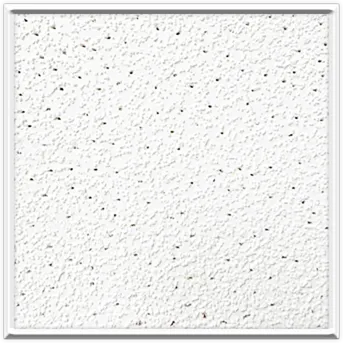8 月 . 14, 2024 01:16 Back to list
Comparing PVC and Gypsum Ceilings for Interior Design Pros, Cons, and Applications
PVC vs Gypsum Ceiling A Comprehensive Comparison
When it comes to interior design and architecture, the choice of ceiling material can dramatically influence the aesthetic appeal, functionality, and overall ambiance of a space. Two popular options for ceilings are PVC (Polyvinyl Chloride) and gypsum. Each material has its advantages and disadvantages, making it critical for homeowners and designers to understand the differences before making a decision. This article provides a comprehensive comparison of PVC and gypsum ceilings, highlighting key factors such as cost, durability, maintenance, installation, and aesthetic appeal.
Cost
One of the primary considerations for any renovation or construction project is cost. PVC ceilings are generally more affordable than gypsum ceilings. The pricing can vary based on design preferences and local market conditions, but PVC panels tend to offer a more budget-friendly option. This makes PVC an attractive choice for those looking to minimize expenses while still achieving a modern look. On the other hand, gypsum ceilings can be more expensive due to the material's properties and the installation process, which can require more skill and labor.
Durability
When it comes to durability, both PVC and gypsum ceilings have distinct advantages. PVC ceilings are water-resistant, making them an ideal choice for areas with high humidity, such as bathrooms and kitchens. This property helps to prevent mold and mildew growth, ensuring a longer lifespan. Additionally, PVC is impact-resistant and does not crack easily, which can be advantageous in busy households or commercial spaces.
In contrast, gypsum ceilings are known for their fire-resistant properties, which can provide an added layer of safety in case of an emergency. However, gypsum is more vulnerable to moisture and may suffer from water damage if exposed to excessive humidity. Damaged gypsum ceilings often need to be replaced rather than simply repaired.
Maintenance
Maintenance is another critical factor to consider. PVC ceilings require minimal upkeep; regular dusting and occasional wiping with a damp cloth are usually sufficient to keep them looking fresh. Because they don’t absorb moisture or dirt, PVC ceilings remain relatively clean over time.
pvc vs gypsum ceiling

Gypsum ceilings, while beautiful, can require more meticulous care. They may need periodic repainting to maintain their appearance, as they can dull over time. Additionally, any signs of water damage may necessitate more extensive repairs or replacements, which can add to long-term maintenance costs.
Installation
When it comes to installation, PVC panels are typically easier and quicker to install than gypsum boards. The lightweight nature of PVC allows for straightforward handling and installation, often requiring less expertise. This can save both time and labor costs.
Gypsum ceilings, on the other hand, often involve a more complex installation process. The boards are heavier and often require professional installation to ensure a smooth, finished appearance. This can add to the overall expense of using gypsum over PVC.
Aesthetic Appeal
Aesthetically, both materials offer unique designs and finishes. PVC ceilings come in a range of colors and patterns, allowing for greater flexibility in design. They can mimic the look of wood, metal, or even intricate designs, catering to contemporary tastes.
Gypsum ceilings usually offer a more traditional and elegant finish, often featuring ornate designs and textures. They can be painted and customized to match any interior decor style, which makes them a popular choice for high-end residential and commercial projects.
Conclusion
In conclusion, the choice between PVC and gypsum ceilings ultimately depends on individual needs, preferences, and budget constraints. PVC ceilings offer affordability, durability, and low maintenance, making them suitable for areas with high humidity. Conversely, gypsum ceilings provide an elegant appearance and fire resistance, although they may demand more upkeep and care. By weighing these factors, homeowners and designers can make a well-informed decision that aligns with their specific requirements.
-
Revolutionizing Interior Design with Ceilings t grid Suspended SystemNewsOct.29,2024
-
Revolutionizing Ceiling Design with ceiling access panel with Gypsum Tile WaterproofNewsOct.29,2024
-
Revolutionizing Interior Design with PVC Gypsum Ceiling: A Comprehensive GuideNewsOct.29,2024
-
Elevating Interior Design with High quality Mineral Fiber Ceiling TilesNewsOct.29,2024
-
Revolutionizing Interior Design with PVC Gypsum Ceiling: A Comprehensive GuideNewsOct.29,2024
-
Elevating Interior Design with High-Quality Mineral Fiber Ceiling Tiles: A Comprehensive GuideNewsOct.29,2024







